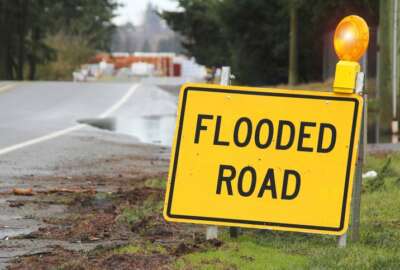
Exclusive
Top lawmaker proposes taking activities away from climate vulnerable bases like Camp Lejeune
House Armed Services Readiness Subcommittee Chairman John Garamendi says its too costly to keep important activities at climate vulnerable bases.
Best listening experience is on Chrome, Firefox or Safari. Subscribe to Federal Drive’s daily audio interviews on Apple Podcasts or PodcastOne.
Camp Lejeune, Ft. Hood, San Diego Naval Base and other climate vulnerable bases may not hold the same responsibilities as they have in the past, as lawmakers are rethinking their roles after a year of extreme weather and damage.
With Democrats in charge of the House and weather events continuing to cost the military billions of dollars to reconstruct bases, it’s possible some of the most recognizable bases will need to change their look and roles.
“We need to take into consideration whether every action needs to take place at that base,” House Armed Services Readiness Subcommittee Chairman John Garamendi (D-Calif.) told Federal News Network. “These are bases that will continue to be at risk in the future. Is there a better place for those activities to take place? That analysis is being done.”
A congressional staffer told Federal News Network that the Defense Department shouldn’t be spending money to build installations that are knowingly in harm’s way.
There is no lack of bases in harm’s way from climate change either.
DoD sent a report on climate change to Congress in January. That report states 53 of 79 mission-critical bases are vulnerable to recurrent flooding and 60 of those installations will face that threat in the next 20 years. Additionally, 43 of the 79 bases are currently susceptible to drought and 48 will be in the next 20 years. Wildfires also pose a threat; 36 bases on the list are currently at risk, while 43 will be over the next two decades.
DoD delivered a second report in March outlining the top 10 most vulnerable bases to climate change. Some of the most iconic and heavily populated bases were on the list. They include the Washington Navy Yard; Joint Base Andrews, Maryland; Beale Air Force Base, California; and Eglin Air Force Base, Florida. Others include Ft. Meade, Ft. Detrick — both in Maryland — and Ft. Bragg in North Carolina.
Building in resiliency
Garamendi isn’t only thinking about what to do about climate change affecting operations now; he’s also looking at the future.
Garamendi said as bases hit by extreme weather rebuild, they need to keep resiliency in mind.
“Can the buildings and structures be designed to be resilient in the face of the threats that we know have occurred and will continue to occur probably with even greater force?” Garamendi said. “Can the bases be built resilient to the threat? It’s going to be extremely expensive.”
The Air Force is asking for nearly $5 billion to fix up Air Force Base Tyndall, which was ravaged by Hurricane Michael last year, and Offutt Air Force Base in Nebraska, which was damaged by flooding last month.
The Marine Corps recently announced Congress approved the movement of $400 million from other accounts to repair Camp Lejeune in North Carolina. More than 100 buildings on the base were damaged by Hurricane Florence and the Marines estimate it will cost about $3.6 billion to repair the base.
A new standard
Garamendi said he will be the vanguard against new military construction being built without climate change considerations too.
“I will not allow any military construction project to go forward that is not prepared for climate change,” Garamendi said. “I don’t have total power here, there are others who will chime in on this, but I think my committee is very set on the course that all military construction projects going forward will be designed and built for climate change.”
He added that the Readiness Subcommittee will do everything in its power to make sure every military construction project’s location is evaluated to climate change.
“If it must be built at that location then it must be built resilient to the maximum threat that we can imagine,” Garamendi said. “That’s sea levels rising a meter, hurricanes force five, tornadoes, flooding and so forth.”
Garamendi said he wanted new buildings on bases to have maximum energy conservation, which will cut costs in the long run and help with the extra costs of building in resiliency.
Copyright © 2025 Federal News Network. All rights reserved. This website is not intended for users located within the European Economic Area.
Scott Maucione is a defense reporter for Federal News Network and reports on human capital, workforce and the Defense Department at-large.
Follow @smaucioneWFED





